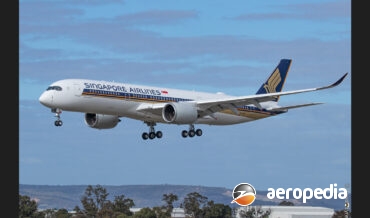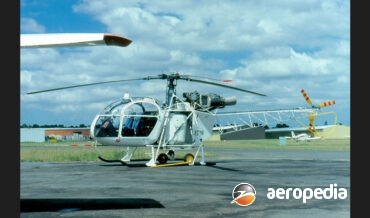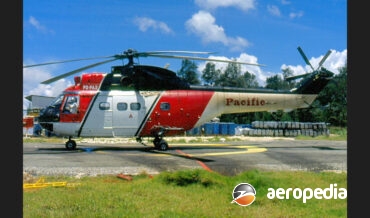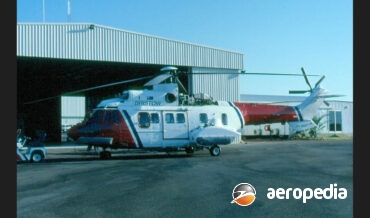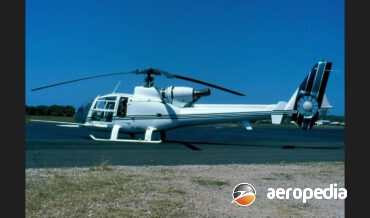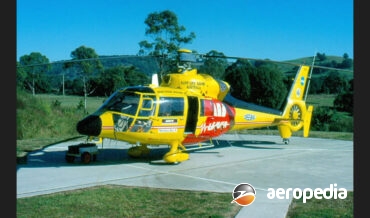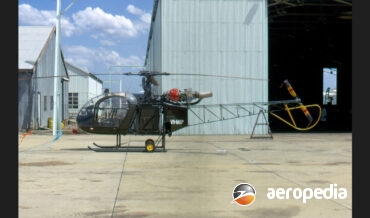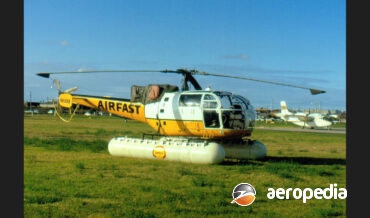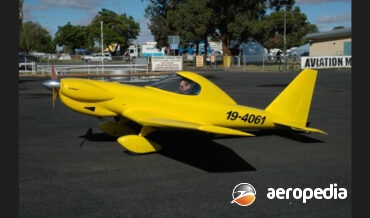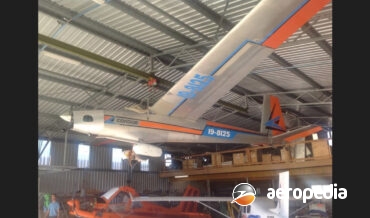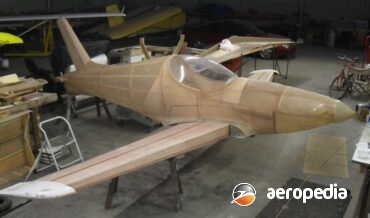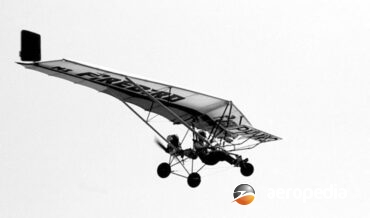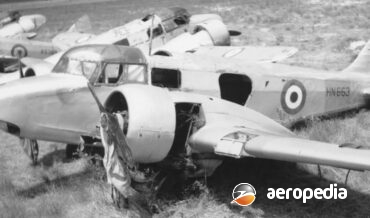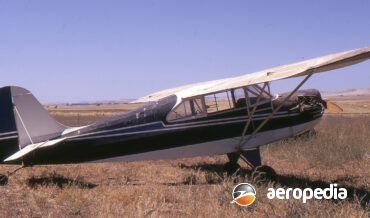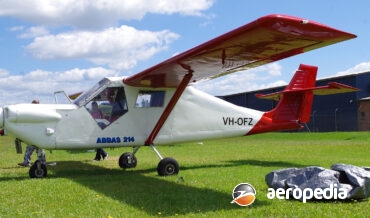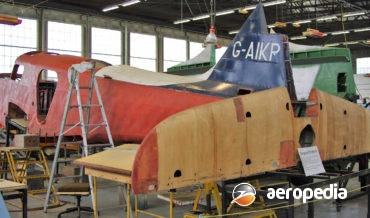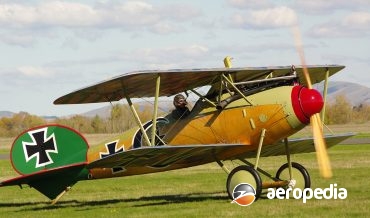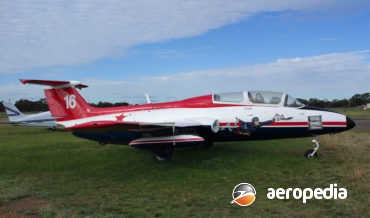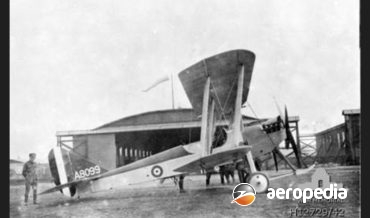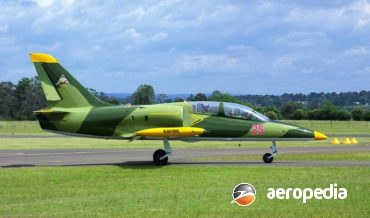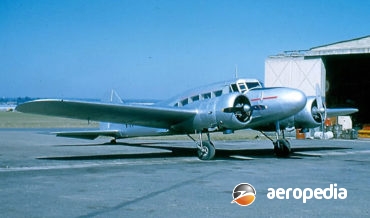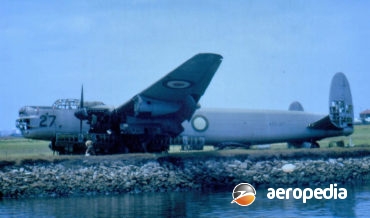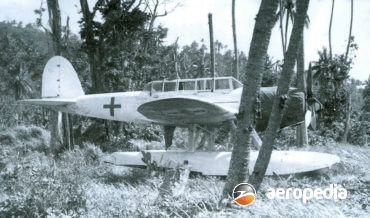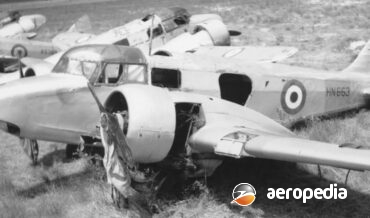All Contents
Contents
Photograph: The prototype Vertiia V1000 VH-VEI (c/n 001) (AMSL) History: The Vertiia is described as the world’s most efficient and long-range vertical take-off and landing aircraft. The company, AMSL Aero Pty Ltd, was formed in 2017 and the aircraft is said to be inspired by Lawrence Hargrave. The aircraft in
David C. Eyre
- October 4, 2023
The Airbus A350 series was conceived in 2004 to meet a requirement of international airlines for an extra long-range airliner.
David C. Eyre
- June 26, 2020
The Lama was developed by Aerospatiale in France mainly to meet the requirements of the Indian armed forces for a light utility helicopter.
David C. Eyre
- June 26, 2020
The Puma series of helicopters was designed and developed by the National Aerospatiale Company in France in the early 1960s to meet a requirement of the French Army for a medium-lift, twin-engine, helicopter.
David C. Eyre
- June 26, 2020
The AS 332 Super Puma was a development of the SA 330 Puma, which flew for the first time in April 1965.
David C. Eyre
- June 26, 2020
Developed as a general-purpose, light-weight helicopter for military and civil use, the Gazelle was produced in large quantities both by Aerospatiale in France and Westland in the United Kingdom, as well as being assembled in Yugoslavia.
David C. Eyre
- June 26, 2020
Designed as a replacement for the widely used Alouette series of general- purpose helicopters, the Dauphin was initially produced in two versions; the single-engine model fitted with a Turbomeca Astazou turboshaft of 783-kw (1,050-shp); and the twin-engine model powered by two Arriel turboshafts.
David C. Eyre
- June 26, 2020
Designed by the French company, Sud Aviation, which later became part of Aerospatiale, the national aerospace company, the Alouette II was one of the early success stories in the development, production and marketing of helicopters in France.
David C. Eyre
- June 26, 2020
The Alouette III was first placed in production by Sud Aviation in 1961 as a general-purpose helicopter for both civil and military applications.
David C. Eyre
- June 26, 2020
In 1930/1931 Mr Ronald Ashworth of Burwood, NSW, designed and built a parasol wing aircraft, Baby Bee, at Blair Park, Croydon, making its first flight in April that year.
David C. Eyre
- May 25, 2020
The Karaone is one of a series of light aircraft produced by Australian Aircraft Works. This company obtained rights to a series of aircraft from the US Company, Grover Textiles, the parent company deciding not to continue its financial backing to its ultra-light division, Grover Aircraft of Hendersonville, North Carolina,
David C. Eyre
- May 25, 2020
The T-Star was designed and built by Arthur Armour and is a single-engine low-wing monoplane of all-metal construction.
David C. Eyre
- May 25, 2020
The Hornet Sport was produced by Australian Aircraft Kits as a development aircraft for a planned future single-seat high-performance sporting aircraft constructed from composites.
David C. Eyre
- May 25, 2020
Little is known about this aircraft but it would seem that it was a single-seat light aircraft modified by Arthur Armor from a Winton Cricket design.
David C. Eyre
- May 25, 2020
Very little is known about this aircraft. However, information available indicates that it was probably a Blanik glider that has been modified by Australian Aircraft Kits of Taree by the installation of a Rotax 912S engine in the nose in an attempt to make it into a self-launched glider.
David C. Eyre
- May 25, 2020
These two were ultralight designs by Arthur Armour, initially of Fairfield, NSW but who later moved to Taree, NSW and continued design and construction of ultra-light aircraft there.
David C. Eyre
- May 25, 2020
The Baby Bipe was an ultralight aircraft designed and built by Arthur Armour in the 1980s and was displayed at the Australian International Airshow at Avalon in 1995.
David C. Eyre
- May 25, 2020
The Firebird M-1 was a single-seat light sporting ultralight aircraft with a tricycle undercarriage.
David C. Eyre
- May 25, 2020
Very little is known about this aircraft. It was a light sporting monoplane and one of many designs by Willy Andiel of Port Macquarie, NSW.
David C. Eyre
- May 25, 2020
The Albany aeroplane was a single-engine monoplane along the lines of a Bleriot XI built in Albany WA in about 1916/17 by Messrs C Layton, Robert Reynolds and Alexander Fraser and a Mr G Bristow is said to have been involved, though one record indicates the spelling of his name
David C. Eyre
- May 25, 2020
Following the cessation of hostilities in World War I the Austral Monoplane Co of Hunter Street, Sydney, advertised ‘you can fly with a motor cycle engine – working plans £1.
David C. Eyre
- May 25, 2020
In the 1940s in New Zealand a scaled-down replica of an Oxford was constructed using two Pobjoy Niagara radial engines which had been removed from the General Aircraft Monospar ZK-AET (ex VH-UVM) and which, after a short service with the RNZAF, had been retired and used as Instructional airframe No
David C. Eyre
- May 25, 2020
The Auster series of light aircraft has been popular in Australasia over the years and stories abound about what they have been used for and their roles in country areas.
David C. Eyre
- May 25, 2020
The UD-2 was one of a number of designs produced by Steven Cohen, Known as the UD-2 (Ugly Duckling) it was of alloy construction and fitted with a Rotax two-stroke engine.
David C. Eyre
- May 25, 2020
Charles Auld of Brooklyn Park, SA, constructed an autogyro along the lines of a Cierva and it was fitted with a 34-kw (45-hp) Anzani engine but is not known to have flown.
David C. Eyre
- May 25, 2020
In about 2000 Mr Abbaz, a resident of Sydney, commenced the design and construction of a two-seat in tandem monoplane with a pusher engine and a tricycle undercarriage.
David C. Eyre
- May 25, 2020
This ultralight aircraft was designed and built by Australian Aero Engines Corp. Little is known about it but it became 19-3974 (c/n 1) and was registered from 16 September 2003 to October 2006.
David C. Eyre
- May 25, 2020
The AS-65 Consul was a conversion of the Airspeed Oxford for civil use by Airspeed Ltd of Portsmouth, and a total of 161 aircraft was produced.
David C. Eyre
- March 23, 2020
The Albatros series of fighters was produced in Germany for operations in World War I and was reasonably successful in its design role. The D.I, D.II and D.III were all put into production but the D.IV failed to reach this status.
David C. Eyre
- May 19, 2019
The L-29 Delfin was Czechoslovakia’s first jet aircraft of indigenous design, being designed and built at the Vodochody Works of the Czech nationalised OK industry, the company being known as Aero Vodochody Narodni Podnik and it has been building aircraft since just after World War I.
David C. Eyre
- May 19, 2019
When it became evident in the British summer of 1914 that war was inevitable, the British Government ordered the RAF BE.2c into production and contracts were forwarded to a number of manufacturers to build the type, including Sir W G Armstrong, Whitworth & Co Ltd of Gosforth Newcastle on Tyne.
David C. Eyre
- May 19, 2019
The L-39 series of trainer and light attack aircraft was designed and produced by Aero Vodochody in the Czech Republic, this company producing some 10,000 jet trainers for the world’s markets over the years.
David C. Eyre
- May 19, 2019
On 24 March 1935 the prototype (K4771) of the Avro Anson, a military derivative of the Avro 652 airliner, flew for the first time. Subsequently 8,138 examples were built in the United Kingdom, and 2,882 in Canada, incorporating Mks 1 to 21, with the last of the total of 11,020
David C. Eyre
- May 19, 2019
The Aerospatiale Ecureuil was designed for the civil market, the prototype (F-WVKH) being flown for the first time on 27 June 1974 with a Lycoming LTS 101 turboshaft, being followed by the second prototype (F-WVKI) with a Turbomeca Arriel 1A engine.
David C. Eyre
- May 19, 2019
The Avro Lancaster was perhaps the most famous, and certainly the most successful, heavy bomber used by the RAF in World War II.
David C. Eyre
- May 19, 2019
One of the most important dive-bombers in the Japanese arsenal in its campaign in the Pacific War, the prototype Aichi D3A, known by the Allies as the Val, was first flown in January 1938 with a 530 kw (710-hp) Nakajima Hikari I nine-cylinder radial air-cooled engine.
David C. Eyre
- May 19, 2019
The Avro 694 Lincoln was designed in anticipation of an Air Ministry specification for a heavy bomber capable of operating at altitudes up to and including 10,668 m (35,000 ft).
David C. Eyre
- May 19, 2019
In 1937 the Japanese Navy sought the design of a three-seat reconnaissance floatplane, and a specification was issued to a number of aircraft manufacturing companies.
David C. Eyre
- May 19, 2019
The prototype of the Avro Type 698, or Vulcan, was ordered in January 1948, the first aircraft (VX770) flying with four 6,500 lbst Rolls Royce Avon R.A.3 turbojets in 1952.
David C. Eyre
- May 19, 2019
Using the Airspeed Envoy as a starting point, the Airspeed Company of Hampshire designed a twin-engine aircraft to meet a multiplicity of functions, including pilot training, navigation, gunnery, photographing and bombing training, known as the AS.10 Oxford. In October 1936 an initial order was received from the British Air Ministry
David C. Eyre
- May 19, 2019
Recent Comments
Archives
Categories
- No categories
Categories
- No categories
Latest Posts
Newsletter


